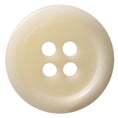- No products in the cart.










In recent years, there has been a growing trend towards the use of natural materials in the fashion industry. Consumers are becoming more conscious of the environmental impact of the clothing they buy, and are looking for alternatives to traditional synthetic materials. As a result, designers and manufacturers are turning to natural materials like organic cotton, linen, and silk in order to create sustainable and environmentally responsible clothing.
One of the key drivers of the growth in the use of natural materials in fashion is the increasing awareness of the environmental impact of synthetic materials. Synthetic fibers like polyester, nylon, and acrylic are made from petroleum-based products, and the production of these fibers contributes to the release of greenhouse gases into the atmosphere. In addition, synthetic fibers do not biodegrade, and the microfibers that are shed during washing can end up in the world's oceans, where they can harm marine life.
Another factor contributing to the growth in the use of natural materials in fashion is the increasing demand for ethical and sustainable products. Consumers are becoming more concerned about the social and environmental impact of the products they buy, and are looking for alternatives to fast fashion and other unsustainable practices. Natural materials like organic cotton, linen, and silk are grown and processed without the use of harmful chemicals and pesticides, which helps to protect the environment and the health of those involved in production.
In addition to environmental and ethical concerns, natural materials also offer a range of benefits from a design perspective. Natural fibers like cotton, linen, and silk have a soft, luxurious feel that is comfortable against the skin, and they are naturally breathable, which makes them ideal for warm-weather clothing. They also have a natural texture and drape that makes them easy to work with, and they come in a variety of colors and patterns, allowing for greater creativity in design.
The growth in the use of natural materials in fashion is also being driven by advances in technology and production processes. New production methods have been developed that allow natural fibers to be processed more efficiently, reducing the environmental impact of production and making natural materials more affordable. In addition, new treatments and finishes have been developed that help to make natural fibers more durable, making them a viable alternative to synthetic materials for a wider range of clothing and accessories.
The trend towards natural materials in fashion is also reflected in the growing popularity of slow fashion and sustainable fashion practices. Consumers are looking for clothing that is made to last, rather than disposable pieces that are worn once and then thrown away. Natural materials like organic cotton and linen are strong and durable, and can be reused and recycled, making them an attractive alternative to synthetic fibers for those looking to reduce their environmental impact.
In conclusion, the growth in the use of natural materials in fashion is a response to growing consumer demand for sustainable and environmentally responsible products. Natural fibers like organic cotton, linen, and silk offer a range of benefits over synthetic materials, including environmental and ethical advantages, a comfortable feel, and greater creative potential. As consumers continue to prioritize sustainability and environmental responsibility, it is likely that we will see a continued growth in the use of natural materials in fashion.